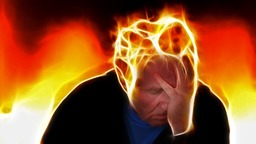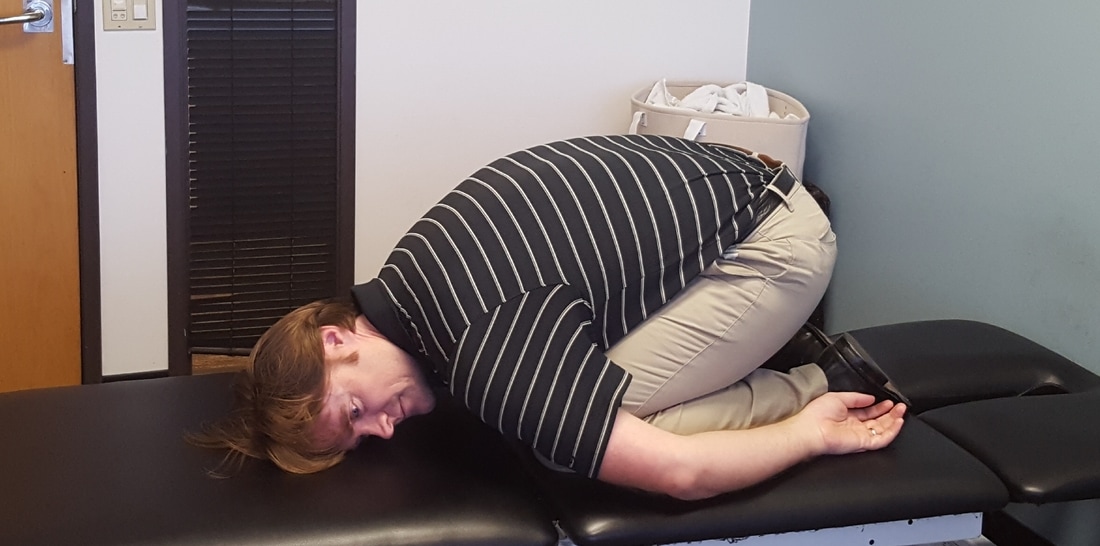
One of the major keys to resolving headaches is the trigeminal nerve. I was working with someone's trigeminal nerve the other day, which is a complex technique involving many moving parts, when it suddenly dawned on me that patients can do self work on the trigeminal nerve! Now, that might not seem like a big deal to most people, but that's only because most people have no idea how important the trigeminal nerve is. The trigeminal nerve comes out of the skull deep to the jaw and wraps all over the head and face. It's the major nerve responsible for headaches, and most chronic head, neck, and jaw pain is at least partially due to trigeminal nerve irritation. Being able to release this nerve on their own at home is proving to be a major help for many of my patients.
This technique gently releases the nerve, making changes all over the head, face, jaw, and neck. All you have to do is get in the position, hold the position for about one minute on each side, and breathe deeply while you do so. The deep breathing changes the pressure inside the skull and helps to move and release the nerve. This technique has proven so useful to my patients that I now teach it to most of my patients with head and neck pain and to other bodyworkers in my Balancing the Head and Neck course. I consider it one of the first steps in managing head and neck problems.
The best way to imagine what we're doing with this technique is improving the blood flow through the opening in your skull, freeing the nerve and allowing it to function better. This area can become very stagnant, and stagnation means too much pressure and not enough flow of the fluids through the area. This pressure causes irritation. The technique helps to resolve this pressure by improving the blood flow through the region.
Instructions: Get into a hands-and-knees position and then drop your bottom to your ankles, and drop your head to the floor. Turn your head to the left so that you are resting the right side of your forehead on the ground (aim for the part of your forehead mid-way between the center of your forehead and your right ear). You'll probably feel an odd but painless pressure deep to your jaw on the right side. This is where the trigeminal nerve exists the skull, and this is where we want a gentle release to occur. Breathe deeply for about one minute. Each time you inhale the pressure will slightly increase, and each time you exhale the pressure will slightly decrease. This helps to pump blood and fluid through the opening in your skull, which helps the nerve to function much better. Then turn your head to the left and repeat for the left side. This technique should never be painful: if it ever is painful, then stop doing it.


 RSS Feed
RSS Feed
